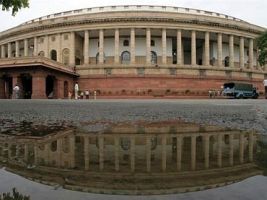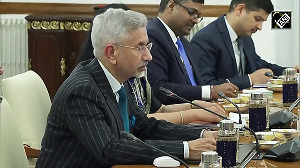The Planning Commission needs to be replaced by institutions prescribed under the Constitution for the functions it usurped, feels Indira Rajaraman
 The Planning Commission was a powerful centre of extra-constitutional power, but not because the Constitution overlooked the need for the roles that it played.
The Planning Commission was a powerful centre of extra-constitutional power, but not because the Constitution overlooked the need for the roles that it played.
The prescription of fiscal flows from Centre to states was assigned under Article 280 to Finance Commissions, set up every five years with what by convention has been a two-year term.
The need for co-ordinated policy between Centre and states was likewise foreseen and assigned.
Article 263 provides for an Inter-State Council, for “investigating and discussing subjects in which some or all of the States, or the Union and one or more of the States, have a common interest; or making recommendations upon any such subject and, in particular, recommendations for the better co-ordination of policy and action with respect to that subject”.
How much more explicit could our Constitution have been?
The Planning Commission in that sense was not merely extra-constitutional but actually anti-constitutional, since its existence effectively blocked for 30 years the appointment of the ISC.
The ISC was eventually born in the 1980s, but it has existed wanly and apologetically in the shadows as a poor cousin of the Planning Commission.
Both bodies were headed by the prime minister who had no time for either, but the Planning Commission had a full-time deputy chairman with Cabinet rank, where the Council had none.
Appointment to the ISC as secretary was regarded by bureaucrats as a punishment posting.
Many of the schemes for which the Planning Commission assumed authorship actually originated in the states.
The employment guarantee scheme in Maharashtra and the mid-day meal scheme in Tamil Nadu were the pioneers that led to national adoption.
Their spread to other parts of the country, voluntarily rather than by fiat, could easily have happened through exchange of ideas in the Inter-State Council.
The Planning Commission itself became widely seen as an employment guarantee scheme for bureaucrats and economists.
Appointment to that Valhalla as Member guaranteed that erstwhile colleagues became supplicants, for funded projects, membership of committees, and just plain boondoggles of various kinds.
Whole institutions were seriously dependent on the job of evaluating outcomes of Plan schemes in the region where they were located, where it was understood that they would not bite the hand that fed them by doing an objective evaluation.
The actual damage done by the Planning Commission extended to both the small and the big.
Small damage, to give one example, might be a handout towards the corpus of a social science institution of a crore, say, where this amount was actually deducted from the Plan flow due to the state (in which it was located) as support to the state Plan.
So the state was actually done out of its due by this diversion towards an institution, in which decision it had no say.
But these were mere nibbles at the margin.
There was bigger damage.
The constitutional channel for central assistance to states is through Finance Commissions.
The statutory flows prescribed by these bodies are formulaic, and admit of no discretion.
These flows are what have held the Indian federation together.
The governments at the Centre and states might be bitter enemies, but the state could not be denied the funds that were its statutory right, as prescribed by the Finance Commission.
Planning Commission flows on the other hand, for its first 18 years, were entirely discretionary.
The first prime minister is not held guilty of institutional destruction, unlike his dynastic descendants, but he did sideline Finance Commissions while elevating the Planning Commission, as the disrectionary arbiter of which state was to get what for its development.
If development funding was not amenable to statutory apportionment between states, how else was fairness to be ensured?
Gosplan, his role model, was responsible in no small measure for the break-up of the former Soviet Union.
It was only after the 1967 elections, when states elected governments not politically aligned with the Centre, that Planning Commission assistance to state Plans became subordinated to a formula (Gadgil-Mukherjee), after a two-year lag.
In a 2007 research paper, I show that the formulaic share of total flows from Centre to states over a 55-year period from 1950, aggregating across statutory and Plan flows, rose (or fell) systematically for every rise (fall) in political diversity among states, with a two-period lag.
In time, new schemes pushed assistance to state Plans, the original rationale for existence of the Planning Commission, into insignificance.
Some schemes did carry apportionment formulae of their own, but either because of administrative requirements like utilisation certificates, and more recently, co-funding, states with poor administrative capacity and not enough revenues (the two go together) were unable to access the new Plan schemes.
In the end, more even than the inequality of access to funding which it fuelled, the Planning Commission destabilised the federation by the manner in which state governments were made to engage with it.
The ISC, as constitutionally conceived, is a multilateral body where Centre and states were meant to sit around a table together, on an equal platform.
The Planning Commission, on the other hand, engaged with state governments serially, one by one.
Elected heads of state governments were made to appear before the Planning Commission singly, and justify the outcomes of Plan funds.
Its eight or nine Members sat before them in judgement, while not being electorally or otherwise accountable themselves.
In the interests of full disclosure, I must reveal that I was a Member of a Finance Commission (the 13th), and in prior years a willing participant in several committees of the Planning Commission.
During my episodic association, the power wielded by the Planning Commission was effectively concealed by the ramshackle socialist era interiors of Yojana Bhavan. But in recent years, the Indian taxpayer has done up the interiors, too.
The ISC could use both the premises and the expertise of the staff, and start the task of convening issue-specific meetings with departmental representatives from states, so as to remove the procedural obstacles that have landed us in the present combination of high inflation and low growth.
Indira Rajaraman is a retired professor of economics










